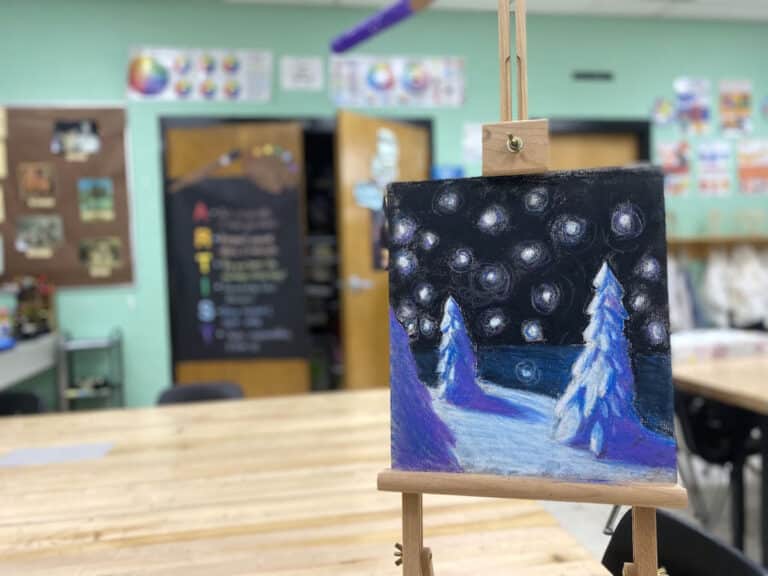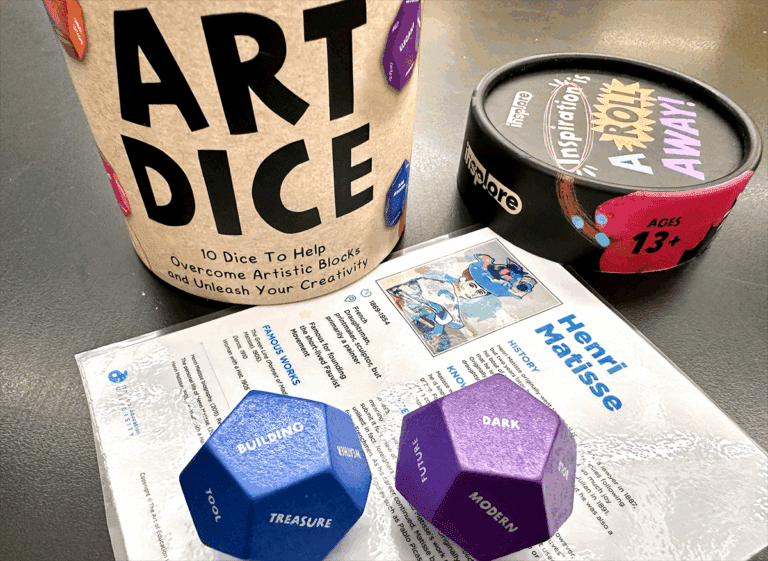As I gear up to team-teach a STEAM course for the first time next semester, I’ve been thinking about what it really means to integrate all of these disciplines together. What does it really look like to teach in a collaborative environment where the focus is process, not product? How do I encourage the use of the 4 Cs while maintaining the integrity of my art curriculum?
Trying to find some answers, I’ve stumbled upon too many articles and resources arguing that the arts should be a “small a” in STEaM. Or, even worse, that exclude the arts because the authors feel they don’t hold the same weight as the other subjects. This conundrum not only pops up in the STEM/STEAM conversation, but also with initiatives like Project-Based Learning and Makerspaces. Art can be a powerful tool in these collaborative frameworks. As art teachers, we should take note.
So, the question remains:
How does art fit with these initiatives?

If you teach in an elementary or middle school (or maybe even high school), chances are, you can think of many scenarios when you’ve been asked to work standards from other subjects into your curriculum. These requests can be so overwhelming that some teachers refuse them all and take comfort in doing “art for art’s sake.” Of course, this is completely ok. We shouldn’t have to intertwine every science or math standard to make our curriculum more rigorous or valid. Art education can, and should, stand independently for many reasons.
However, I want to look at this absorption of art into STEM from another angle. Instead of becoming annoyed and defensive, what if we thought of art as the true equalizer? What if art is the subject that brings these disciplines together to create more meaning, more interest, and more success for our students?
For this reason, I choose to embrace STEAM, PBL, Makerspaces, and any other frameworks where art can act as a guiding and motivating factor.
Two Ways to bring Art into STEM
One of the easiest ways to start weaving Art with a capital “A” into a STEM curriculum is to use concepts from the STEM fields in your classroom.
Let’s take the scientific method, for example. Scientists use this method as a basis for experimentation. They ask questions, develop hypotheses, and draw conclusions. You may have not realized that there are two artistic frameworks where these same ideas are present.
The Studio Habits
The Studio Habits correlate to many steps within the scientific method. Inviting students to compare the two and discover similarities is a great way for students to realize the natural connections between both art making and science experimentation.
The Design Thinking Process
An even closer link to the art making process can be seen with the design thinking process. In general, it comes down to five essential concepts: Defining/Observing, Empathizing, Visualizing, Creating Prototypes, and Testing/Refining. The process is definitive; students are clearly exposed to steps guiding their thinking, planning, and execution of projects and tasks.
Of course, as art teachers, we may wonder where the meaning and personal connections are within this process. However, that’s the beauty of partnering with other teachers. Students can get a well-rounded look at a topic through multiple subjects.
Take a peek at the entire process in the download below.
Download NowIf you’d like to learn more about makerspaces, Design Thinking, creativity, innovation, and more, check out AOEU’s course Innovation Through Design where you’ll explore some of the most popular collaborative education models being used by teachers today.
How do you like to illustrate the connections between art and STEM in your curriculum?
Have you used the design thinking process in your art room?
Magazine articles and podcasts are opinions of professional education contributors and do not necessarily represent the position of the Art of Education University (AOEU) or its academic offerings. Contributors use terms in the way they are most often talked about in the scope of their educational experiences.







